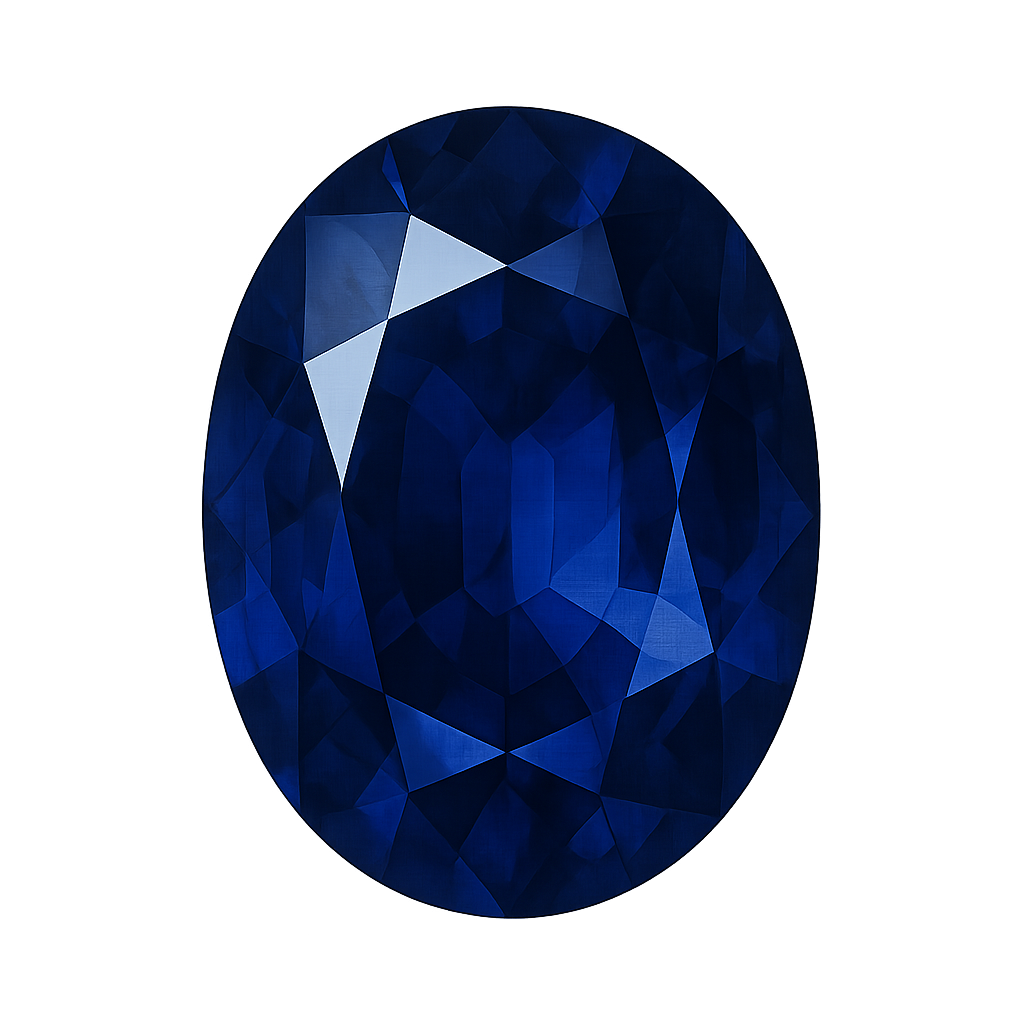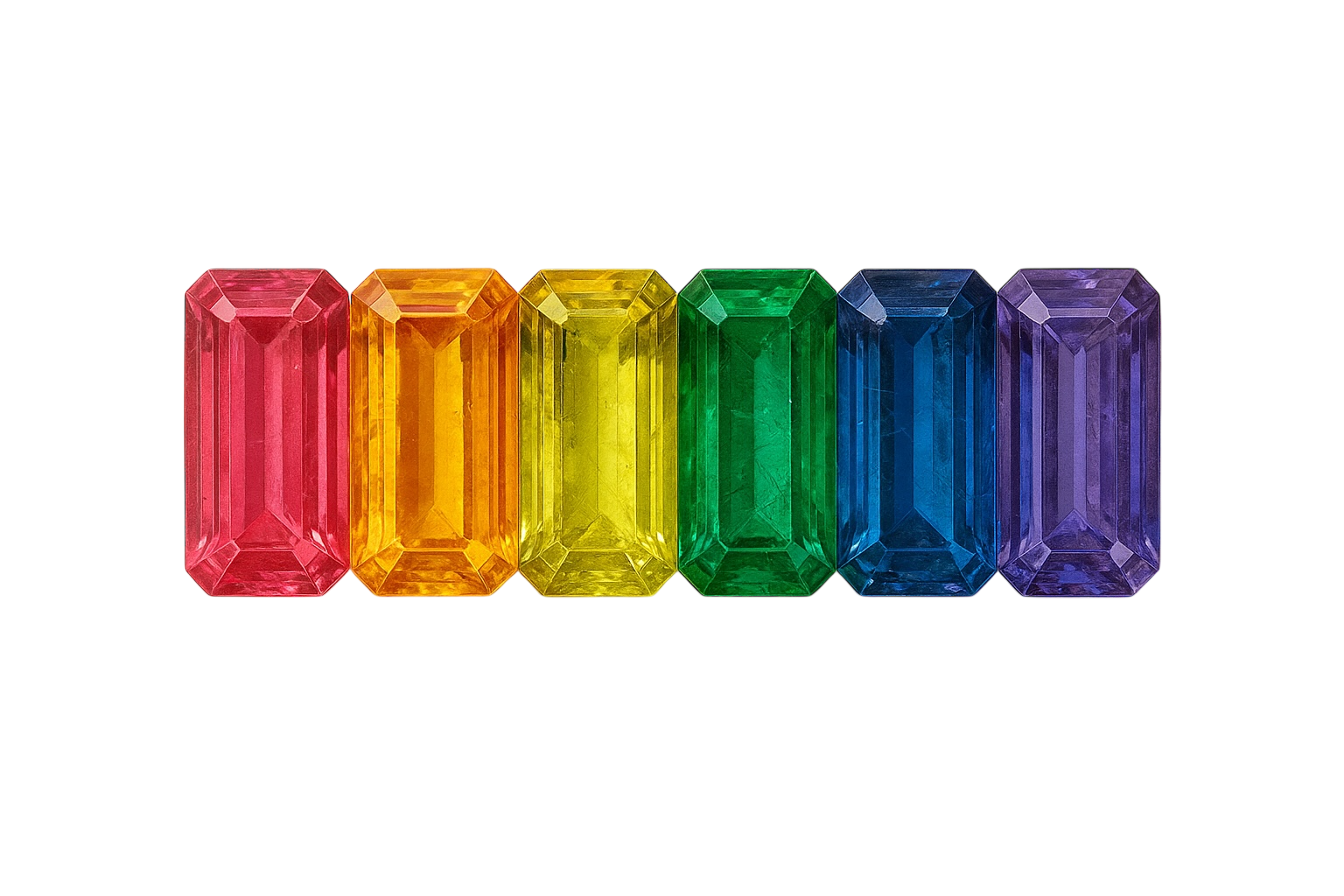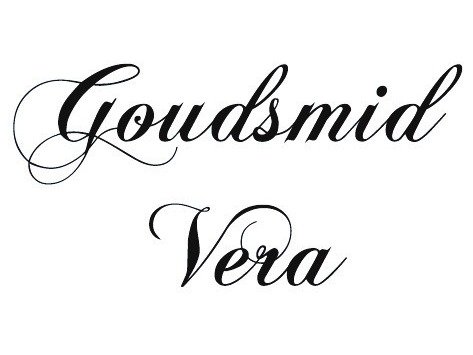
Sapphire
Color: Sapphire can be found in many colors, from blue, yellow, pink, green, purple to colorless. The classic and most valued color is deep royal blue. The color is caused by traces of iron and titanium in the crystal, which absorb light and give the stone its characteristic color.
Hardness: 9 on the scale of Mohs. Sapphire, like ruby, belongs to the corundum family. It is a very hard and durable gemstone, suitable for jewelry worn daily.
Location: Major sources include Sri Lanka, Myanmar (Burma), Madagascar, Thailand, Australia, Montana (United States), and Vietnam.
Types and characteristics:
-
Blue sapphire: Intense blue, ranging from light to deep royal blue; the most classic and popular sapphire.
-
Pink sapphire: Pink shades ranging from light pastel to vivid pink; increasingly popular in jewelry.
-
Yellow sapphire: Bright yellow to golden yellow; often used as an alternative to yellow gold colored stones.
-
Green sapphire: Rare and subtle green; usually light to medium in color.
-
Star sapphire: A special sapphire with a star shaped pattern visible on the surface, caused by rutile inclusions.
Inclusions: Most sapphires contain small natural inclusions that give the stone character. Completely inclusion free sapphires are rare.
Cut: Sapphires are often cut in round brilliant, oval, cushion, or baguette cuts; a good cut maximizes color and brilliance. Star sapphires are usually cut as cabochons to reveal the star pattern.
Value: The value of a sapphire is determined by color, clarity, size, and the quality of inclusions. Intensely colored, pure sapphires without visible inclusions are the most valuable. Star sapphires are rare and can have a higher value due to the star effect.

